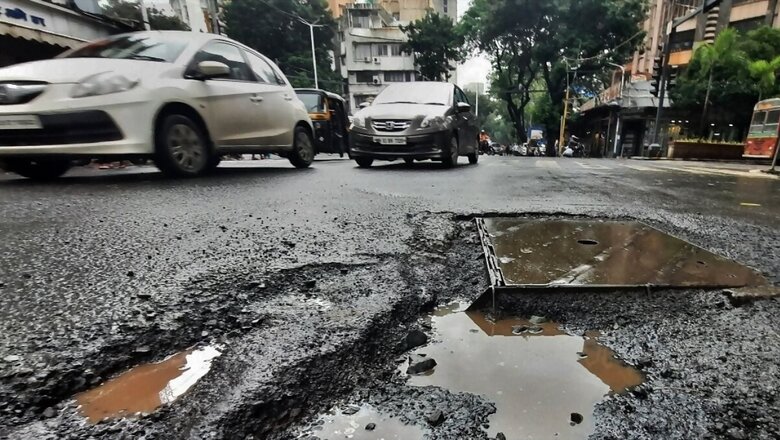
views
Potholes on roads are a major challenge for authorities and for India’s 1.46 lakh kilometres of national highways (NH), the task is tougher. In an effort to offer better-quality roads, the Ministry of Road Transport and Highways (MoRTH) is planning to introduce a new policy of whitetopping the existing stretches of national highways that need repair.
The ministry has sought a response from the stakeholders over the new policy — ‘Use of Whitetopping Technology for rehabilitation/strengthening of National Highways’ — by September 7.
As per the draft, three types of existing national highways can be provided the treatment: those bypassed that need to be de-notified and one time improvement has to be done prior to handing over to authority concerned; lane addition for capacity augmentation is not envisaged for a minimum period of 20 years; or NHs responding to applied bituminous overlay and experiencing re-rutting of bituminous layer due to heavy axle load in tandem with prevailing high ambient temperature/aggregate related issues and recurrent wearing course disintegration/reflection cracking due to high rainfall.
The Technology
Whitetopping technology, as per the draft, is defined as a concrete overlay constructed on top of an existing in-service bituminous pavement. It is a Portland Cement Concrete (PCC) overlay that is constructed on top of a bituminous road. This overlay acts as a long-term alternative for the rehabilitation or structural strengthening of roads.
As per the draft, the advantages include that it extends the lifespan of the pavement by 20-25 years, there is much less lane closure during design life, lower life-cycle costs when compared with bituminous overlay, and durable wearing course in high rainfall areas. Apart from this, concrete is relatively light in colour and hence more reflective to light, it absorbs less heat and reduces the urban heat island effect.
“Improved reflection of lights from vehicles enhances safety, lowers energy requirement of external lighting, contributes less to heat in environment. Fuel consumption on concrete roads has been found to be less than bituminous roads,” it reads.
The ministry said India has about 1.46 lakh kms of national highways in length and the quantum of aged assets is increasing, which warrants rehabilitation to extend its life further.
“Flexible pavement constitutes the most important and largest component of the ageing NH network. There are several rehabilitation/strengthening techniques/treatments available for flexible pavement and whitetopping is one of them,” it added.
Stakeholders of MoRTH can email the suggestions to Bidur Kant Jha, Director, New Technology for Highway Development at [email protected] by September 7.
Used in Pradhan Mantri Gram Sadak Yojana
Whitetopping is being implemented on a large scale under Pradhan Mantri Gram Sadak Yojana (PMGSY), official ministry documents reveal. As of March 2022, the National Rural Infrastructure Development Agency has sanctioned 4,831 km of road length under whitetopping.
The ministry opted for the technology as it can provide better serviceability, longer service life, lower life-cycle cost, and improved safety compared to the conventional concrete pavement. This technology, it said, can be a good long-term solution to the perpetual maintenance problem of roads with poor drainage.
Bruhat Bengaluru Mahanagara Palike Using it too
Since 2016, the BBMP has adopted this technology for its roads. The BBMP has taken up whitetopping on select roads in Bengaluru city under Special Infrastructure Projects Grants.
“The Asphalted or blacktopping roads found commonly in the city of Bengaluru have an expected life span of five years. The arterial roads which have been maintained by BBMP needed maintenance/ rehabilitation due to wear and tear from heavy traffic during peak hours. Also, drainage is also the major causes of concern in rainy season, which is affecting the life of pavement in terms of structural failure. Hence, in order to overcome the failure, whitetopping is a suitable proposal without disturbing the overall pavement structure,” the BBMP had said while proposing the technology.
In Bengaluru, work on almost 20 kilometres is underway at a cost of Rs 200 crore at Chamarajpet, Gandhinagar, Malleswaram, and Mahalakshmi Layout. It is planned for almost 100 roads with a collective length of 150 km across the city.




















Comments
0 comment